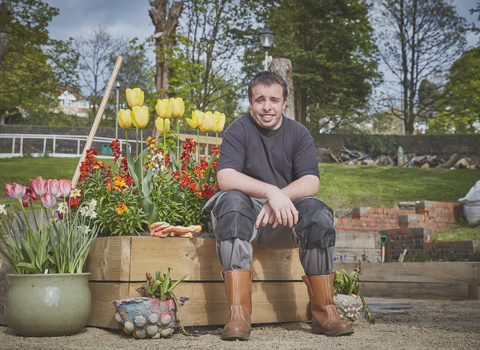Making sure everyone can access your group or project
Katrina Martin/2020VISION
Why is this important?
Different people need different things to help them take an equal role in a group. Some people will need additional support. Other people will need barriers removing.
How to make your group accessible to all (https://www.youtube.com/watch?v=2VU0xTqm0XQ)
Aaron from Lincolnshire Voluntary Centre Services talks about how to make sure everyone can access your project.
Please note this information will not cover accessibility at events. That is a separate document.
The aim of this guide is to help you spot and remove barriers and also to create and support equal access.
Creating an inclusive environment
The Disability Rights Commission 2002 says an inclusive environment is:
- easily used by as many people as possible, without needing special treatment or being separate
- able to offer people the freedom to choose how they access and use it, and allow them to take part equally in all activities
- able to embrace diversity and difference
- safe
- legible and predictable
- high quality.
Practical thoughts
Not all of these issues will apply to all projects. But whether your project is inside, outside, temporary or permanent, it will need careful planning.
Involve everyone in planning. For example, don’t assume what people with learning difficulties need as one group – that’s too general. Ask people from all backgrounds to help you. See the Helpful Links section at the end of this document.
Physical access
Do you need a ramp? If there is a ramp, is it steep?
Are walkways wide enough? Can a buggy or a wheelchair turn easily?
Is the surface rough? Some wheelchairs and mobility scooters can cope with rough terrain.
Is there anywhere nearby that people can hire outdoor scooters, often called “trampers”?
Is there a range of seating, including wheelchair access at group tables?
Is the signage clear? Do you need graphic signs, symbols, or braille?
How close is the nearest accessible parking? Is it well signed?
Where are the nearest toilets? Are they accessible? Do they have baby changing facilities?
Other access issues
How safe do people feel there at different times or day or week?
Is it safe for people of colour? For women? For people with disabilities? For members of the LGBTQI+ community? For older people? For young people? For those from a variety of socio-economic backgrounds? Don’t assume – ask!
Is all your communication accessible? Available in different font sizes? Available in Easy Read format? Available as audio files? Available in other languages?
You can’t do everything!
Unless you are building a space from scratch, you won’t be able to make it totally inclusive and accessible for every person that exists. But that’s no reason not to try!
Talk to the people who wanted the space. Talk to people who live near the space. Do whatever you can.
Helpful links
Find an accessible toilet – or use this campaign to press your local area to get one! Click here for the Changing Places website.
Very useful guidance here from Disability Rights UK websiteon including people with disabilities.
Link in with the local Disabled People’s Organisations or Disability Community Forums in your area – use a search engine to type in your area name and DPO.
Mencap is great for information about people with learning disabilities. Start here, with how to communicate and then find your local partners here.


The Wildlife Trusts
Have you been part of a community nature project?
We'd love to hear from you! Your experiences will be shared right here on the Community Hub and will inspire others to take action in their own neighbourhoods.





